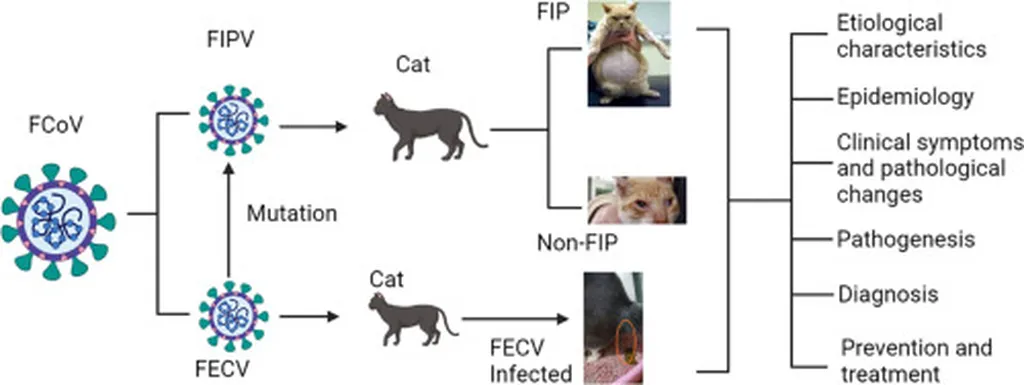In a significant stride towards understanding feline gastrointestinal health, researchers have isolated and characterized a recent strain of feline astrovirus (FeAstV) in China, shedding light on its pathogenicity and the complex dynamics of co-infections. This study, led by Wenjie Wang from the School of Pet Science and Technology at Jiangsu Agri-Animal Husbandry Vocational College, offers crucial insights that could reshape veterinary practices and the pet care industry.
The research, published in *Frontiers in Veterinary Science* (translated as “Frontiers in Animal Husbandry and Veterinary Medicine”), screened 86 diarrheal samples from cats and identified FeAstV in 9.3% of the cases. Notably, most of these infections were co-occurring with feline parvovirus (FPV). “Our findings provide the first direct evidence of FeAstV-induced diarrhea in cats,” Wang emphasized, highlighting the importance of understanding these viral interactions.
The team successfully isolated a FeAstV strain, designated 22SDWH1003-16, in F81 cells, observing cytopathic effects over 15 passages. Phylogenetic analysis classified the isolate within Mamastrovirus 2 group 1, a group commonly associated with inter-specific transmission among cats. This classification is pivotal for understanding the virus’s behavior and potential impact on feline populations.
Experimental inoculation of four cats revealed seroconversion in all animals, transient fecal shedding in three out of four cats, and self-limiting diarrhea in one individual. These results underscore the virus’s ability to induce clinical symptoms, albeit mild and transient. “The self-limiting nature of the diarrhea suggests that while FeAstV can cause illness, it may not be as severe as other viral infections we see in cats,” Wang noted.
The study also explored the role of co-infections, demonstrating that FeAstV replication was enhanced in the presence of FPV. This finding is particularly significant for the pet care industry, as it highlights the need for comprehensive diagnostic approaches that consider multiple pathogens. “Understanding the interplay between different viruses can help us develop more effective treatment strategies and improve outcomes for affected cats,” Wang explained.
The commercial implications of this research are substantial. For the pet care industry, a deeper understanding of FeAstV and its interactions with other pathogens can lead to the development of more targeted diagnostic tools and therapies. This, in turn, can enhance the health and well-being of cats, reducing the economic burden on pet owners and veterinary clinics.
Moreover, the findings could influence the broader animal husbandry sector, particularly in regions where feline populations are significant. By identifying the pathogenicity of FeAstV and its co-infection dynamics, researchers can better advise on preventive measures and management strategies. This knowledge is invaluable for veterinarians and pet care professionals, enabling them to make informed decisions that benefit both animals and their owners.
As the pet care industry continues to evolve, the insights gained from this study will be instrumental in shaping future developments. The research not only advances our understanding of feline astroviruses but also underscores the importance of interdisciplinary collaboration in addressing complex health issues. By bridging the gap between scientific research and practical application, this study paves the way for innovative solutions that can transform the landscape of veterinary medicine.
In conclusion, the isolation and characterization of the FeAstV strain 22SDWH1003-16 represent a significant milestone in feline health research. The findings offer a glimpse into the intricate world of viral infections and co-infections, providing a foundation for future studies and practical applications. As the pet care industry continues to grow, the insights from this research will be invaluable in ensuring the health and well-being of our feline companions.

